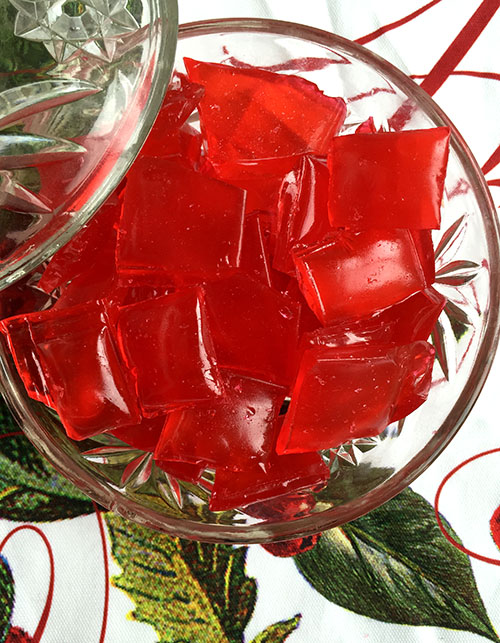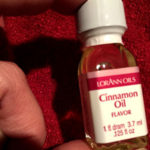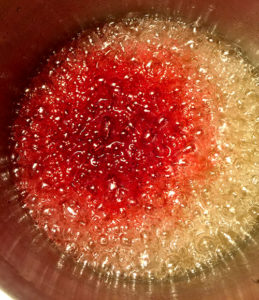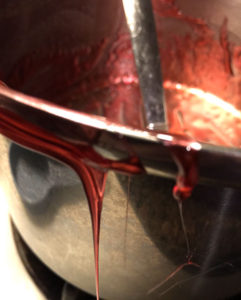 [T]hroughout my childhood, I was treated to a tale of candy. The imagination can almost act as the proverbial “candy store,†and I was the kid who went there, as my parents recounted a magical place. Next to a local movie theater, there existed a candy store where the proprietor not only made all the candies, but did so in full viewing of the store patrons, many of whom were wide-eyed children headed to a Saturday matinee.
[T]hroughout my childhood, I was treated to a tale of candy. The imagination can almost act as the proverbial “candy store,†and I was the kid who went there, as my parents recounted a magical place. Next to a local movie theater, there existed a candy store where the proprietor not only made all the candies, but did so in full viewing of the store patrons, many of whom were wide-eyed children headed to a Saturday matinee.
“Old Man Hyle,†my dad called him, would mix up giant batches of all sorts of sweet things, including hard candy in many flavors (root beer, horehound, lemon). He would pour the molten batches out onto a giant marble slab and use a grid-like device to cut it into pieces before it cooled and hardened.
 These wondrous sheets of glasslike candy included cinnamon (my childhood favorite Jolly Rancher flavor — or “fire†to those who remember). The Hyle movie candy was flavored with a very potent oil, which my dad said was called “oil of cade.†That’s actually a juniper oil, but I’ve since discovered there is a version of cinnamon oil called “cassia oil.â€
These wondrous sheets of glasslike candy included cinnamon (my childhood favorite Jolly Rancher flavor — or “fire†to those who remember). The Hyle movie candy was flavored with a very potent oil, which my dad said was called “oil of cade.†That’s actually a juniper oil, but I’ve since discovered there is a version of cinnamon oil called “cassia oil.â€
Hyle’s candy store closed long before I ever came along. That was probably my first brush with the concept that with changing times, there is sacrifice and loss.
But hearing about Hyle’s candy production as a kid, I was made aware that candy that seemed impossible to make could be made. The frustrating thing about times changing was exemplified that by the time I came long, Hyle’s candy shop was long closed.
 I wasn’t very old, maybe fourth grade, when two other things happened that led me to the cinnamon hard candy I still make. My sister, ahead of me by five-and-half years, brought some sheets of recipes from her home ec candy making session that included English toffee, coconut “strawberries†and a formula for making hard cinnamon candy! Then, our cousin, Janice (aka The Midnight Baker), gave us a tin of beautiful deep-green squares of wintergreen-flavored hard candy. It could be done!
I wasn’t very old, maybe fourth grade, when two other things happened that led me to the cinnamon hard candy I still make. My sister, ahead of me by five-and-half years, brought some sheets of recipes from her home ec candy making session that included English toffee, coconut “strawberries†and a formula for making hard cinnamon candy! Then, our cousin, Janice (aka The Midnight Baker), gave us a tin of beautiful deep-green squares of wintergreen-flavored hard candy. It could be done!
From my childhood until recent years, the cinnamon oil with the strength needed for this fiery candy was most often available only through pharmacies (turns out there are therapeutic applications for the oil outside of candy and cinnamon toothpicks), but with the advent of online shopping, cinnamon oil is available hither and yon.
This candy is made by combining light corn syrup, sugar and water and cooking them until they reach the temperature that turns them into edible glass. Food coloring and cinnamon oil (or flavoring of your choice) are added toward the end of cooking. The cinnamon oil’s potency is not one to be toyed with with — the steam that rises up when the flavoring hits that hot candy will curl your nose hairs…and burn your eyes.
 Over the years, I‘ve learned a lot about this candy, what works and what doesn’t. Batches having spots of milky crystallization led me to a minimal stirring technique and oiling, rather than buttering, the pan (butter has excess moisture) I pour the hot candy into. A newer version of the recipe has the maker adding the food coloring earlier in the cooking process and letting the boiling of the hot candy — rather than the stirring — distribute the color. The cinnamon oil I use now, rather than having to be poured into a measuring spoon (which can be messy because it has to be done quickly), goes in in one simple dose of a small bottle or dram.
Over the years, I‘ve learned a lot about this candy, what works and what doesn’t. Batches having spots of milky crystallization led me to a minimal stirring technique and oiling, rather than buttering, the pan (butter has excess moisture) I pour the hot candy into. A newer version of the recipe has the maker adding the food coloring earlier in the cooking process and letting the boiling of the hot candy — rather than the stirring — distribute the color. The cinnamon oil I use now, rather than having to be poured into a measuring spoon (which can be messy because it has to be done quickly), goes in in one simple dose of a small bottle or dram.
I’ve figured out the right pans to pour the candy in (a small cookie sheet for thinner squares; a 9 by 9 cake pan for thicker ones) and when the best time is to cut it into squares (there’s s a proper moment when square making will take).
The end result seems to be a clearer, cleaner and more flavorful candy than I have made to date. In my annual batch this year, I held a few pieces back for myself, but sent the bulk of it back where it belonged — to the kitchen where I first heard of Hyle and his amazing candy shop. I stick with cinnamon because it’s a favorite all the way around (particularly of my mom’s), but I’m tempted with this refined method to try a number of flavors.
The kid can still dream of the candy store.

Cinnamon Candy
Adapted from www.LorAnnOils.com
2 cups granulated sugar
2/3 cup light corn syrup
3/4 cup water
1 dram (1tsp.*) cinnamon oil or other flavor of choice (peppermint, clove, lemon), recommended are oils from www.LorAnnOils.com
Red food coloring (I use liquid)
Powdered sugar (optional)
Use of a candy thermometer is recommended
*You can use less, if you want a milder version of the flavor
Have all ingredients and tools assembled and within easy reach of the stove. The use of metal spoons and measuring utensils is recommended. Line with foil and lightly spray cookie sheet/jelly roll pan. If using molds, lightly spray cavities of clean, dry candy molds with cooking spray.
In a heavy bottom 2-quart kettle or large saucepan, mix together sugar, corn syrup and water. Stir over medium heat until sugar dissolves.
Insert candy thermometer if using, making certain it does not touch the bottom of the pan. Bring mixture to a boil without stirring.
Early in the cooking process, “wash down” any sugar crystals that form on the sides of the pan with a wet pastry brush.
Continue to cook the syrup, without stirring, until the temperature reaches 260° F; add drops of coloring until desired hue is achieved. Do not stir; boiling action will incorporate color into syrup.
Remove from heat precisely at 300° F (temperature will continue rising), or until drops of syrup form hard, brittle threads in cold water (hard crack stage). After boiling action has ceased, add flavor and stir. USE CAUTION WHEN ADDING FLAVORING TO AVOID RISING STEAM.
Carefully pour syrup into prepared molds or onto the prepared greased and foil lined cookie sheet. (As the sugar mixture begins to set up, you may want to score with a large knife to mark squares.) Do not refrigerate.
Cool completely. Break sheet candy into small pieces and dust with powdered sugar, if desired. Store in airtight containers between waxed paper. Do not refrigerate.